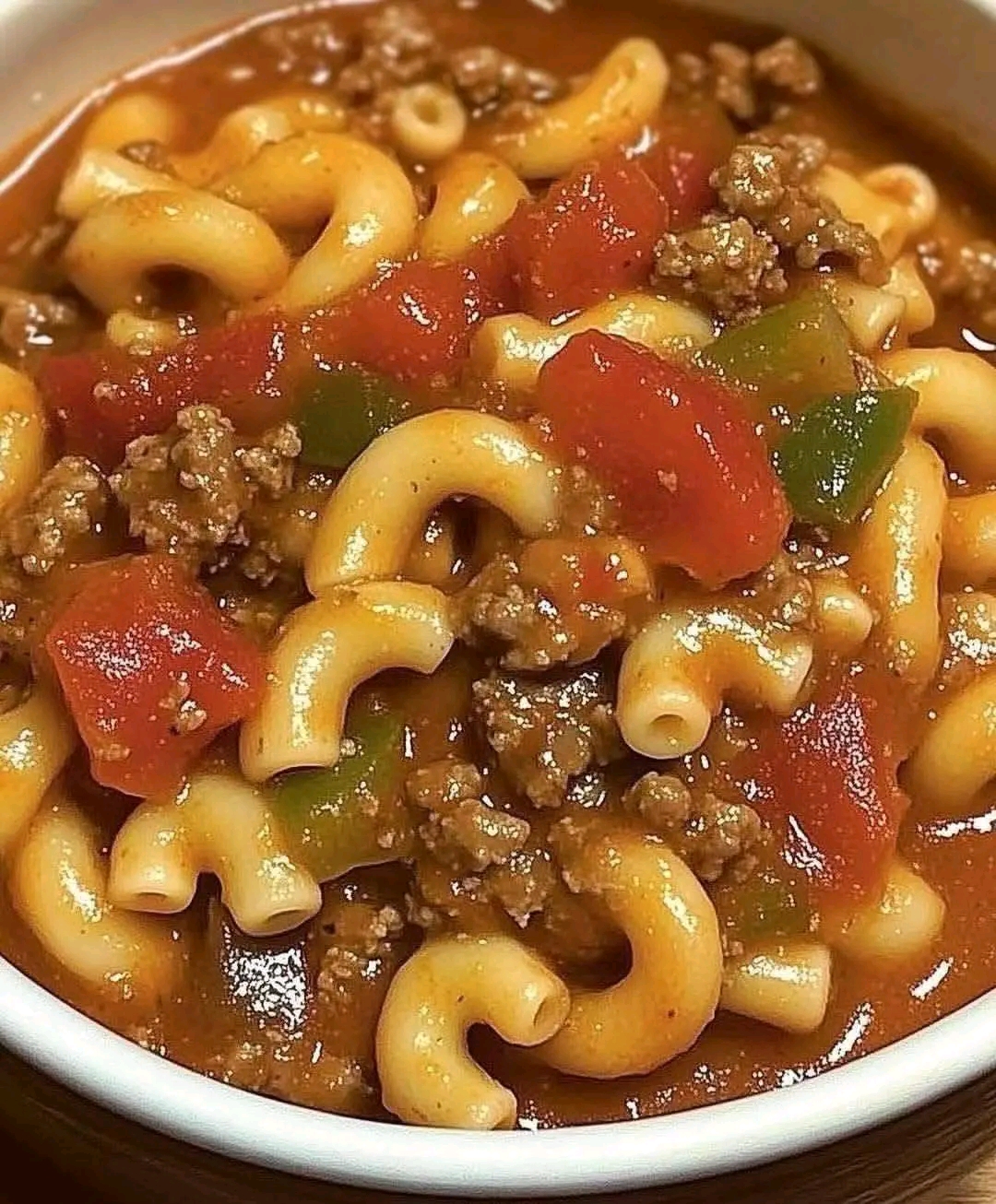Sure! Here’s a full, detailed goulash recipe with a rich introduction, ingredients, instructions, methods, history, and conclusion. I’ve also included some fun “lovers” for those who adore goulash.
The Best Goulash Recipe – A Taste of Tradition
Goulash, a hearty and comforting dish, holds a special place in many hearts, often passed down through generations. This iconic meal originally hails from Hungary, but it has evolved over centuries to become a beloved dish in homes across the globe. Its roots are steeped in history, often associated with shepherds and hearty meals designed to sustain during long days in the fields.
This version of goulash combines tender beef, paprika, and vegetables, simmered to perfection in a rich, flavorful broth. It’s the kind of dish that brings back memories of family dinners and cozy nights around the table.
Ingredients:
- For the Meat:
- 2 lbs beef stew meat or chuck roast, cubed
- 2 tablespoons vegetable oil
- Salt and pepper to taste
- For the Base:
- 1 large onion, finely chopped
- 2 cloves garlic, minced
- 1 red bell pepper, diced
- 1 green bell pepper, diced
- 2 tablespoons paprika (preferably Hungarian or smoked)
- 1 teaspoon caraway seeds (optional but adds depth)
- 1/2 teaspoon ground cumin
- For the Liquid:
- 4 cups beef broth (or water, but broth adds richness)
- 1 can (14.5 oz) diced tomatoes (with juices)
- 1 tablespoon tomato paste
- For the Vegetables:
- 3 medium potatoes, peeled and diced
- 2 carrots, peeled and sliced
- 1 cup frozen peas (optional)
- For Garnish:
- Sour cream (optional but recommended for richness)
- Fresh parsley, chopped (for color and freshness)
- Crusty bread (to soak up the delicious broth)
Instructions:
- Brown the Beef:
- In a large pot or Dutch oven, heat the vegetable oil over medium-high heat. Season the beef with salt and pepper. Brown the beef in batches to ensure even cooking. Once browned, set the beef aside.
- Sauté the Veggies:
- In the same pot, add the chopped onions and cook for 4–5 minutes until they soften. Add the garlic and bell peppers, sautéing for another 2 minutes until fragrant.
- Add the Spices:
- Stir in the paprika, caraway seeds (if using), and cumin. Toast the spices for about 1 minute to enhance their flavor.
- Add Tomatoes and Broth:
- Add the diced tomatoes (with juices), tomato paste, and beef broth. Stir to combine.
- Simmer the Goulash:
- Return the browned beef to the pot. Bring the mixture to a simmer. Cover the pot, reduce heat to low, and cook for about 1 hour, stirring occasionally.
- Add the Vegetables:
- After an hour, add the diced potatoes and sliced carrots. Stir to incorporate and continue simmering, covered, for another 30 minutes or until the vegetables are tender.
- Final Touches:
- In the last 10 minutes of cooking, add the frozen peas if you’re using them. Taste for seasoning, and adjust with additional salt, pepper, or paprika as needed.
- Serve:
- Once the goulash is ready, ladle it into bowls. Top with a dollop of sour cream and a sprinkle of fresh parsley. Serve with warm, crusty bread on the side for dipping.
Methods:
The method for making goulash combines traditional techniques with modern efficiency. Here’s a breakdown of the key steps:
- Browning the Meat: This step is crucial as it develops the deep, rich flavors of the beef. Don’t skip it!
- Building Layers of Flavor: By sautéing the onions and peppers and toasting the spices, you’re layering in flavors that will make the broth incredibly fragrant.
- Simmering: Slow cooking the beef in broth and vegetables allows the flavors to meld together, ensuring the meat is tender and juicy.
- Vegetable Balance: The potatoes, carrots, and peas bring texture and balance to the dish, while also making it a one-pot meal.
History of Goulash:
Goulash has deep Hungarian roots. Originally, it was a humble stew made by cattle herders, or “gulyás,” who cooked it over an open fire in a cauldron. The dish was composed of meat (often beef or pork), vegetables, and a variety of spices, most notably paprika, which was introduced to Hungary from the New World in the 16th century.
Over time, goulash evolved, and it was adopted by various countries in Central Europe, each adding their own regional twist. In Hungary, goulash is often a thinner soup, while in other parts of Europe (including the U.S.), it has taken on a thicker, stew-like consistency.
Goulash was also historically a peasant dish, valued for its hearty nature and ability to stretch ingredients to feed many people. It has since transcended its humble origins to become a comfort food staple.
Conclusion:
Goulash is more than just a meal; it’s a tradition that brings people together. The layers of flavor, the tender beef, and the warmth of the broth make it the ultimate comfort food. Whether you’re making it for a family gathering or a cozy weeknight dinner, this recipe will bring smiles and full bellies to all who share it.
For the Lovers of Goulash:
If you’re a goulash lover, this recipe is your perfect match. It’s rich, hearty, and has just the right amount of spice. The deep flavors will make your taste buds dance, and the tender beef will melt in your mouth. Plus, the versatility of the dish allows you to tweak it to your liking – whether you prefer more veggies, a richer broth, or an extra kick of paprika. It’s a dish that’s sure to win over the hearts of everyone at the table!
I hope this gives you the goulash experience you’re craving! Let me know if you want any modifications or extra details on any part of the recipe!
